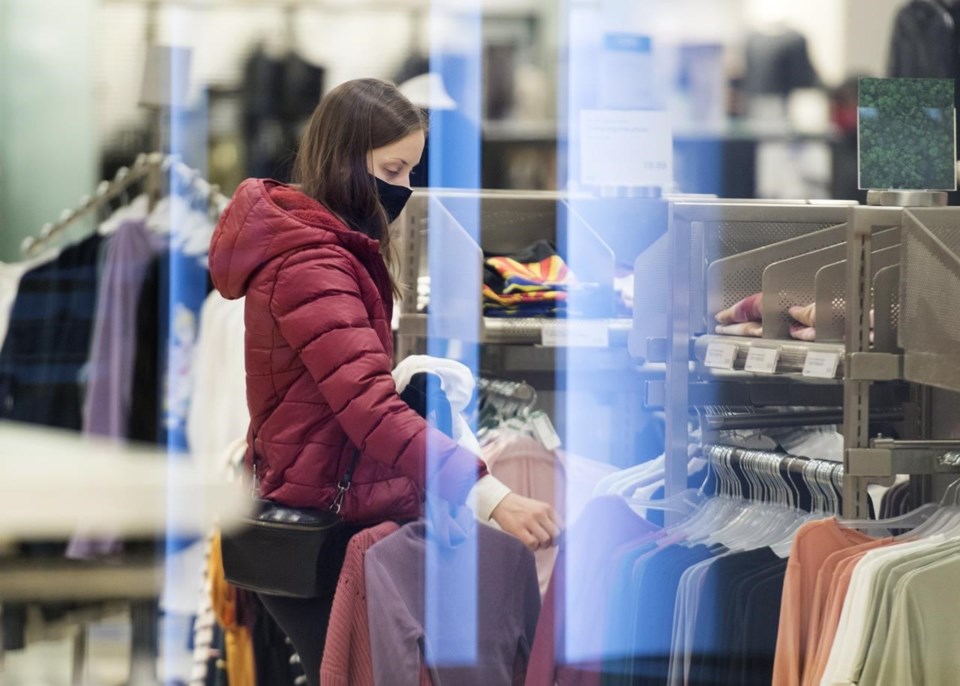Danielle Cosentino used to give bags of unwanted clothes to her cousin every year.
While her cousin loved the free stuff, Cosentino grew tired of buying so much and wearing so little. She had become caught up in acquiring trends through fast fashion retailers only to realize she was locked in a loop of buying cheap clothes, having them degrade quickly, then having to buy more.
“I’ve always been told if you haven’t worn it in two years, then it should go,” says Cosentino, a massage therapist and nutritionist. “And I felt like that would be half my closet.”
A variety of studies and sources go even further than that, estimating that most of us don’t wear 70 to 80 per cent of our clothes.
Averaging out census data over several years, Canadian households spend roughly $300 a month on clothing, according to Statistics sa���ʴ�ý. If most of that will be barely worn, our closets are essentially graveyards of disposable income.
Cosentino wanted to change. She hired Jaclyn Patterson, a personal wardrobe stylist and founder of Shopwise, an online sustainable fashion retailer that focuses on “slow fashion.”
Cosentino began evolving her shopping habits and treating her wardrobe like a long-term investment, which she describes as a “psychological shift.” Even packing for vacations is easier now, as she’s learned how to build outfits and re-wear classic pieces in different ways.
“Yes, you will spend more on sustainable brands, for obvious reasons, but they’re timeless pieces and they really take you the distance,” Cosentino says. “In the long run, you actually spend less. Now I see the value in spending on quality, well-made pieces that aren’t going to make it into a garbage bag.”
As a stylist seeing clients in Toronto and remotely, Patterson has worked with celebrities, Olympians and executives, analyzing wardrobes and shifting shopping habits. She’s focused on helping people break out of the fast fashion cycle.
“Anyone that’s considering going on this journey is making such an admirable act,” Patterson says. “In the world of social media nowadays, it can be really hard to be more intentional about our wardrobe.”
For an exciting date, a one-time event, or life changes such as a new job, it’s “natural for us to want to wear something [new] that will give that dopamine hit,” Patterson says.
“But in my own research and experience as a stylist, I know that same feeling of dopamine also comes from when you recreate an outfit in your wardrobe that’s new, but using what you already have. So there’s an opportunity for all of us to ‘shop our closet’ … rather than going to the store.”
Ysabelle Mercier started her quality-over-quantity style at just 20 years old. Today, she’s known as YSHA Personal Stylist, a Montreal-based service for Quebec celebrities, TV production sets and high-profile personalities.
“Even when I was very young and didn’t have the means, being fascinated by fashion, I was determined to acquire this level of clothing,” Mercier says. “So, at a young age, I refrained from buying clothes for several months and waited for end-of-season sales. Ultimately, at the age of 46, I still have pieces that I bought at the age of 20.”
Seasonal sales and high-quality thrift retailers such as Poshmark or Vinted are great opportunities to scale up your collection, Mercier says.
“When you invest in quality clothing, you seldom part with them,” she says. “The pieces from fashion designers always stand the test of time because, in addition to having excellent craftsmanship, the style has been carefully considered.”
For menswear, Patterson recommends 18 Waits and Outclass, while Mercier likes RW&CO and Robert Barakett — all offer dress shirts between $100 to $200.
For women’s professional attire, Mercier likes Iris Setlakwe and Judith & Charles, with blouses starting around $300-$400. Patterson favours Anne Mulaire, Ang Hill, Encircled, Devlyn Van Loon, Eve Gravel and Power of My People, all with pieces starting around $200.
For women’s evening wear, Patterson likes Birds of North America and Kaela Kay, with dresses starting around $300. For a glitzy event, she recommends The Fitzroy, a dress rental service — gorgeous red-carpet gowns can be worn for less than $150.
“As we live in North America, coats are our specialty,” Mercier points out. She likes Soia & Kyo, Mackage, Rudsak, Quartz Co., sa���ʴ�ý Goose, Adroit Atelier and Sentaler.
Patterson also likes Sentaler, but adds Wuxly, Bano eeMee, BEDI and SteMargScot to her favourites.
While these brands' brick-and-mortar stores are concentrated in sa���ʴ�ý's biggest cities, they all offer products online.
Budgeting recommendations from Ratehub.ca suggests shoppers calculate the cost-per-wear for new purchases and aim to keep that below $3 per wear.
The intention here is not to justify buying a five-dollar T-shirt and wearing it twice before sending it to a landfill — environmental impact is among the leading arguments against fast fashion — but instead to calculate reasonable spending when committing to clothing long-term.
So if you find the perfect dress shirt or blouse that you’ll wear to work once a week, but the shirt is $200, does it make sense?
At $3 per wear, you would need to wear the shirt 67 times to stay budget-friendly; wearing it once a week means committing to the shirt for less than a year and a half. If you truly love the piece and can wear it for years beyond that, it’s a great investment.
This report by The Canadian Press was first published Dec. 12, 2023.
Nina Dragicevic, The Canadian Press



